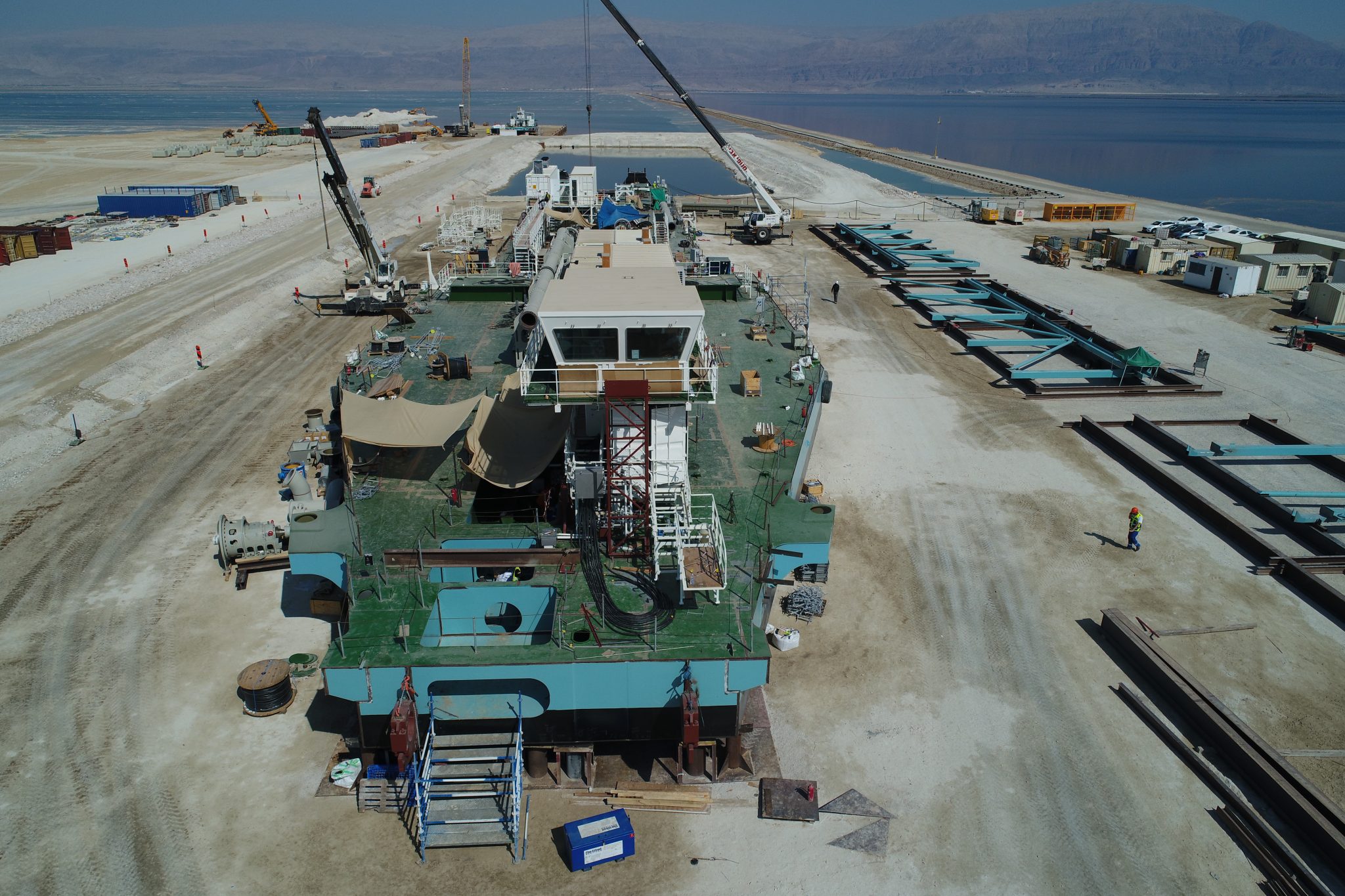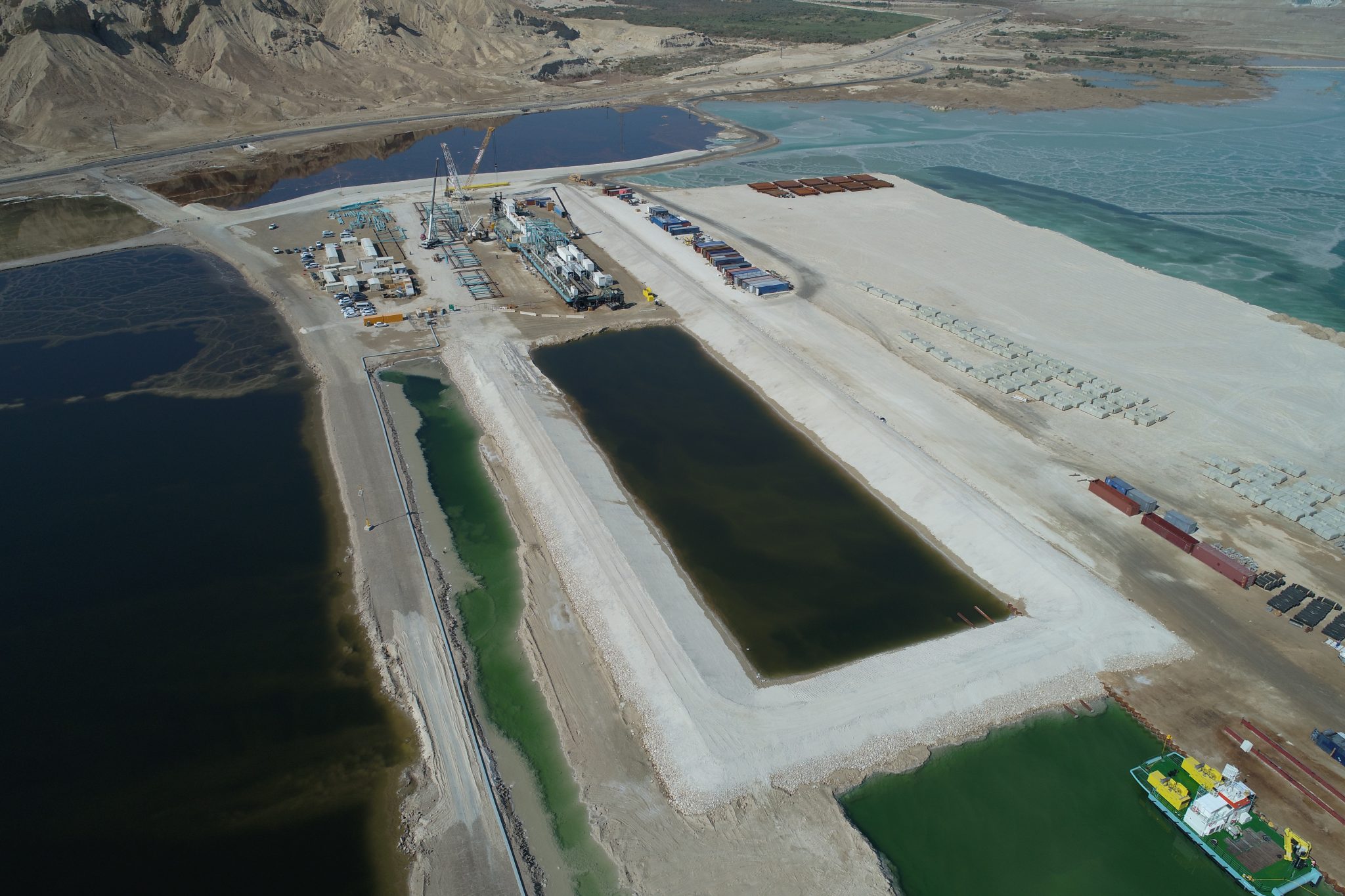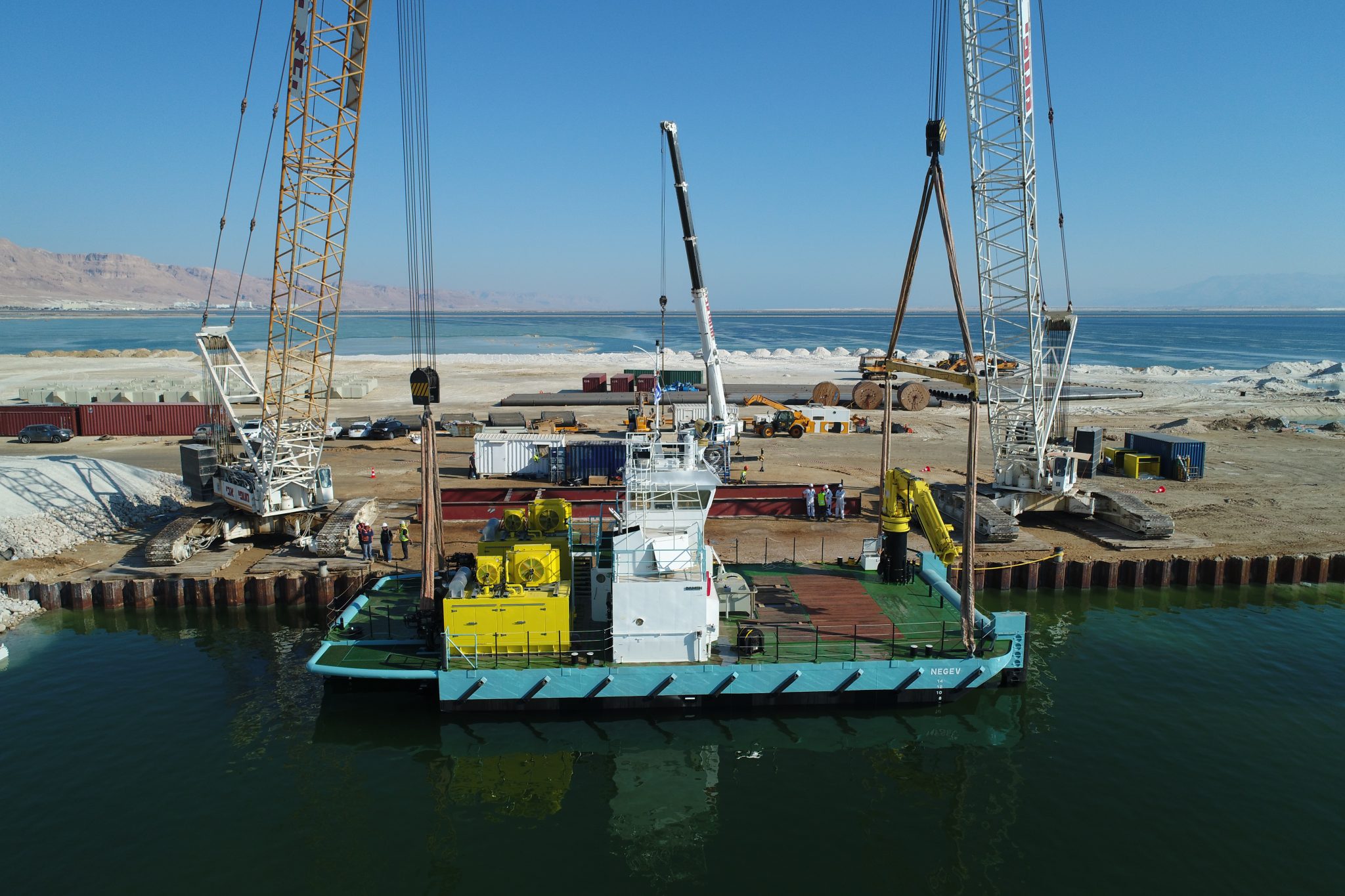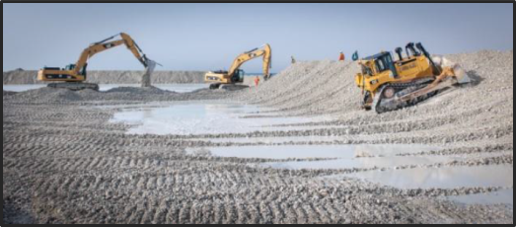Next Topic
Select SDGs to find out how we are taking action in support of the UN Substinable Development Goals
2023 ISRAEL CHEMICALS LTD. | ALL RIGHTS RESERVED

The Salt Harvesting project aims to provide a permanent solution with less environmental impact than other solutions, to the preservation of hotels, industries and communities in the area, in accordance with the government’s decision. The solution lies in harvesting the salt that precipitates in Pond 5 and transferring it to the northern basin of the Dead Sea.
ICL Dead Sea site’s production process requires maintaining a fixed volume of solutions (brines) in Pond 5. Minerals from the Dead Sea are extracted by way of solar evaporation, whereby salt precipitates onto the bed of the salt ponds, the first in line evaporation ponds of ICL Dead Sea. The salt pond known as Pond 5 is the first and largest pond in a series of ponds, having an area of approximately 80 square kilometers. The evaporation processes give rise to the concentration of the brines and sinking of the salt to the floor of the pond. The remaining brines are rich in potash, magnesium and bromides. Approximately 20 million tonnes of salt precipitate at the bottom of Pond 5 every year, creating a 20 cm layer of salt annually. The layers of salt are accumulated one on top of the other. The precipitation of salt reduces the amount of brine in the pond. The production process of the raw material requires that a fixed brine volume is maintained in the pond. Therefore, the pond level has been rising each year according to the rate at which its floor rises.
The rise of the water level in Pond 5 above a certain level may result in structural damage to the foundations of the hotel structures situated close to the water’s edge and to other infrastructure on the western shoreline of Pond 5. Therefore, it was decided to initiate a project to protect the hotels’ beaches and infrastructure. The project has been managed for the past few years by the Dead Sea Preservation (government owned) Company. As part of the coastline defences project, and as a temporary solution, dikes and other coastline defences were constructed on the western beach of the pond, near the hotels.
However, in order to provide a permanent solution for the rising water level in the pond, a Salt Harvesting Project was agreed upon with the Israeli government. This solution requires ICL Dead Sea to annually harvest approximately 20 million tonnes of salt from Pond 5 and transfer the salt to the northern basin of the Dead Sea, thereby stabilizing the water level.
The core of the Salt Harvesting Project are the salt dredgers, that are responsible for dredging salt that precipitate at the bottom of Pond 5, having an area of approximately 80 square kilometers. In October 2017, ICL signed an agreement with Holland Shallow Seas Dredging Ltd., to conduct the Salt Harvesting Project. In November 2020, after years of planning and construction, the operation of the first dredger began. The dredger, which was designed and created especially for the project, is continuously operated by dozens of workers who were recruited for the operation. It dredges an annual amount of about 8 million tonnes of salt from the bottom of the southern basin. It is the first one in a series of 2 to 3 dredgers that together will dredge about 20 million tonnes of salt annually, from the bottom of Pond 5.
The dredger is a marine excavator, 141 meters long and 24 meters wide. It is the largest electric dredger of its kind in the world, with an electrical power output of 10 MW. When designing the dredger, the needs of tourism in the area were taken into account, including the need to prevent noise while working near hotels. The dredger does not require diesel fuel for its operation, it thus minimizes the risk of water pollution due to fuel leaks.
In the first stage, the harvested salt is stored in the salt piles that are located on the eastern side of the pond, to minimize visibility. In the second stage, the salt will be transferred to the northern basin of the Dead Sea.
Recently, a Request for Proposals (RFP) was sent out for the planning, construction, operation and maintenance of the salt transport array to the northern basin of the Dead Sea.
The agreed solution enables further development in the Dead Sea region. New hotels are now being planned, and the town of Neve Zohar (also adjacent to Pond 5) is planning to expand. Both of these developments are made possible due to the water level stabilization in the pond, which will be the outcome of the salt harvest.
ICL will bear 80% of the cost of the Salt Harvest and the Israeli government will bear 20% of the cost.
In April 2017, ICL’s Board of Directors approved a budget of about $280 million to conduct the Salt Harvest project. This budget will be spent over the next 12 years and constitutes ICL’s 80% share of the cost of operating the first dredger.
ICL’s Board of Directors approved a budget of approx. $280 million to conduct the Salt Harvesting project in the Dead Sea.




For more information about the coastline defences and the permanent solution, see Item 4 – Information on the Company— D. Property, Plant and Equipment— Dead Sea Works in ICL’s 2021 Annual Report.
